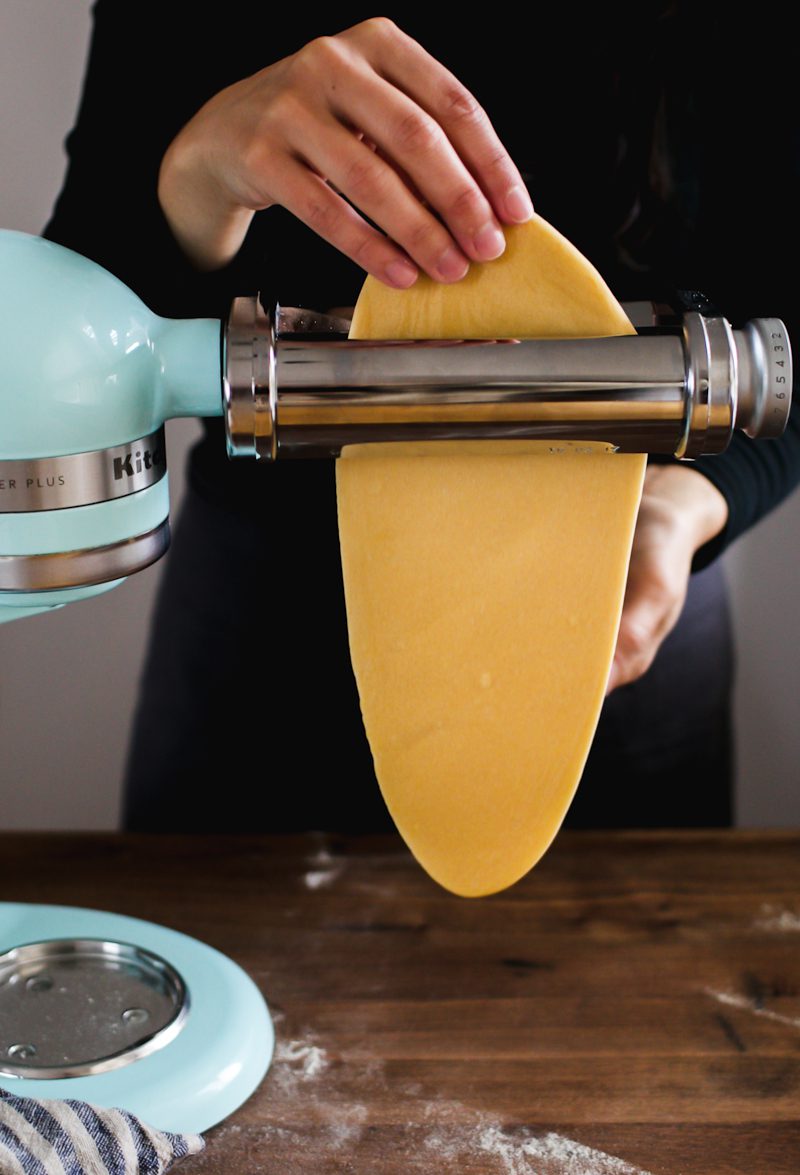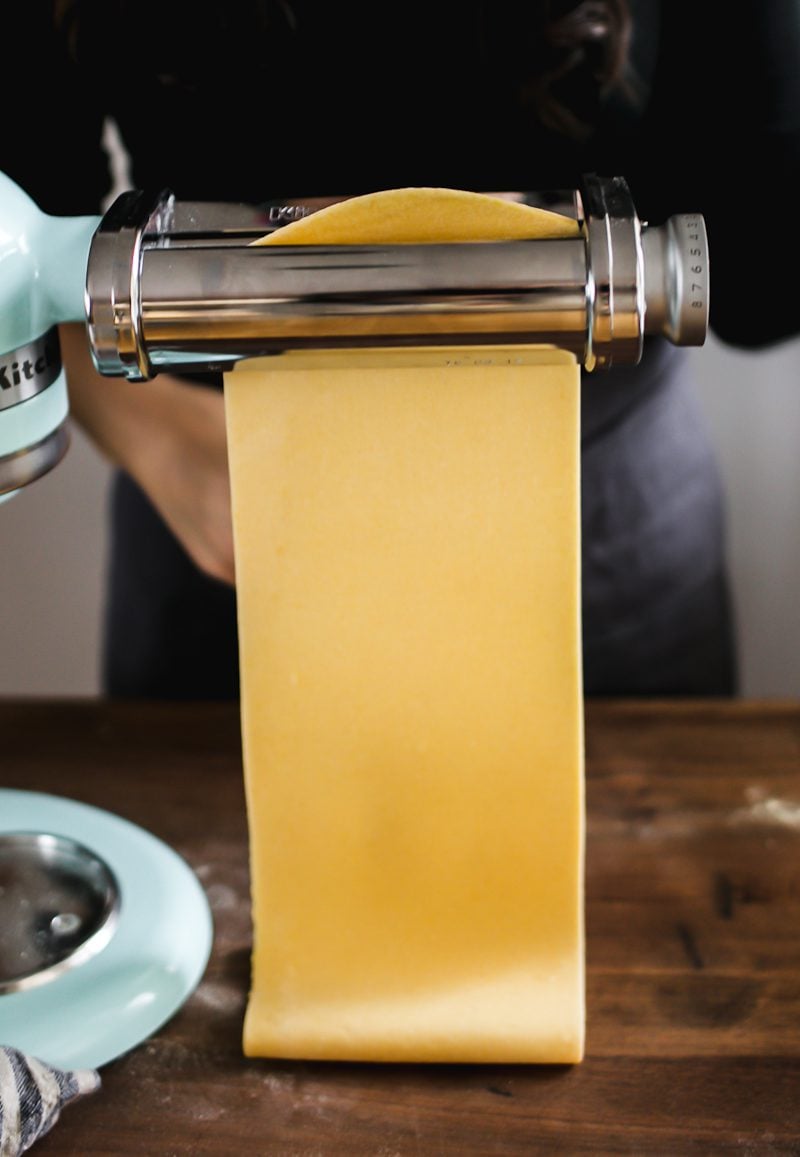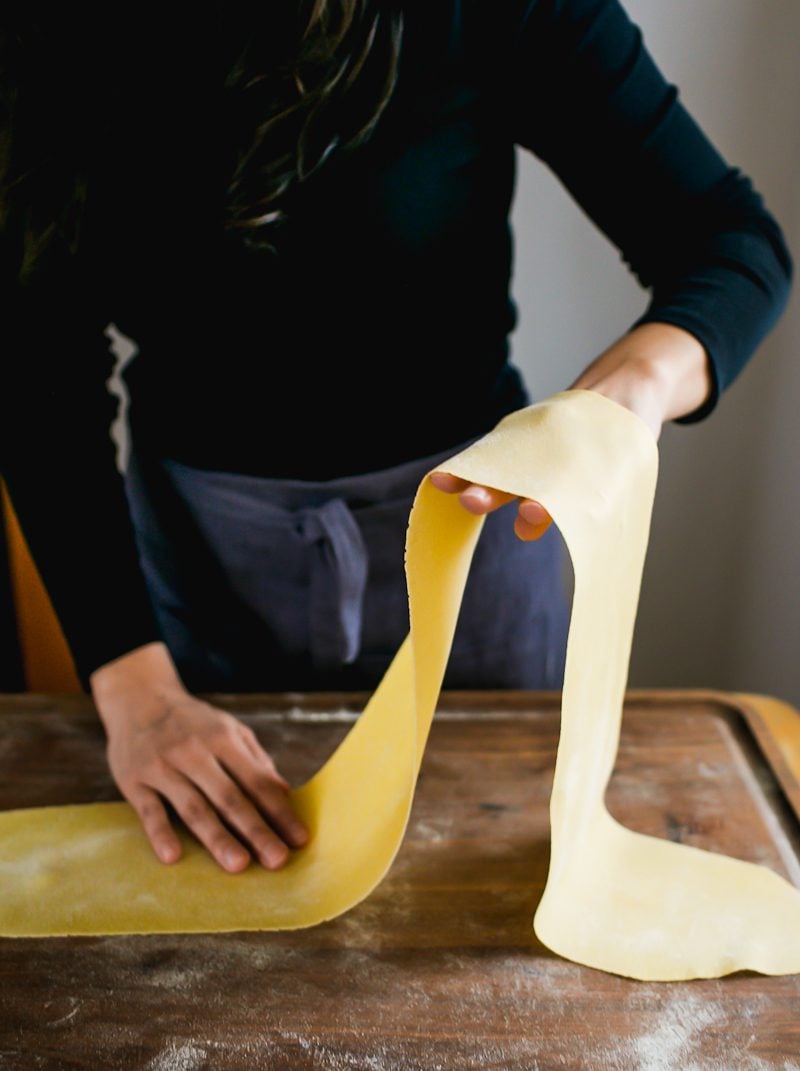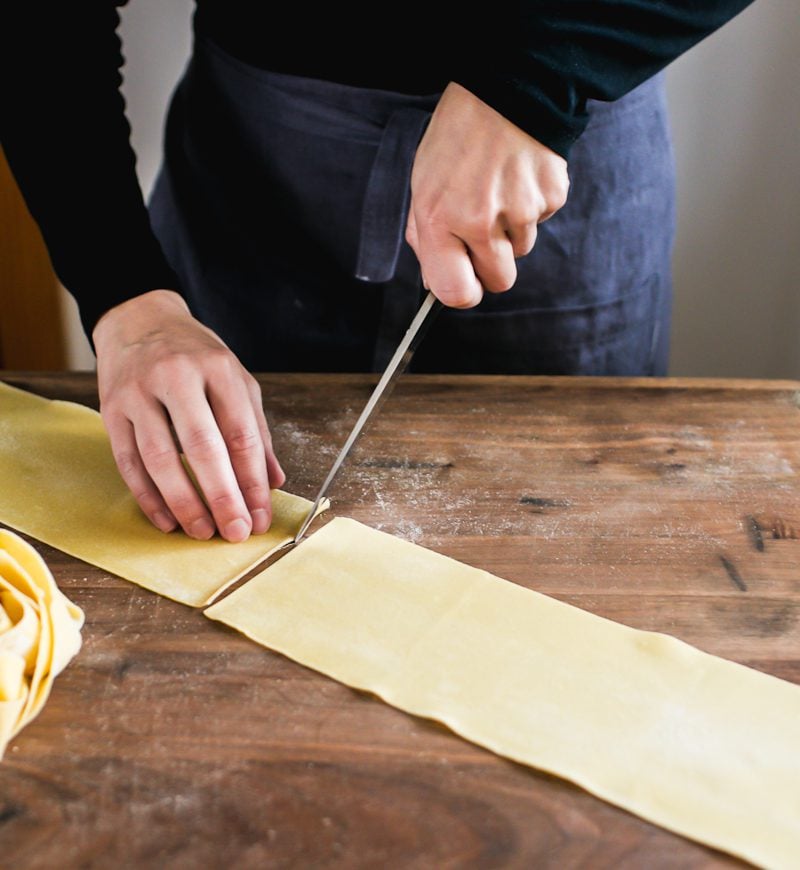Step #1: Make Pasta Dough
- There are several ways to make fresh pasta dough. The food processor method is the fastest. To accomplish this, place the flour, eggs, and olive oil in a food processor that has a metal blade attached. Process to form dough, about 15-20 seconds. After removing to your work surface, cover for five minutes with an overturned bowl.
- Form dough into a ball by kneading it for one to two minutes (don’t worry about technique, the food processor takes care of most of the kneading for you), cover again, and let rest for thirty to sixty minutes to allow the gluten to relax. In the following step, use this time to set up your workstation.
Tip: No food processor? No problem. For detailed directions and a video on making pasta dough by hand, see Beginner’s Guide to Fresh Homemade Pasta Dough.




Step #2: Roll Dough Into Sheets
Before you begin, set up your work station (no exceptions!): Find a large, clutter-free work space to spread out (I use the kitchen table). Your pasta sheets are going to be long! Dust your work surface and pasta machine with semolina flour to prevent sticking. Line a sheet pan with parchment paper to fit the inside dimensions of your pan, no clunky overhang. Cut 4 additional pieces to layer in between the lasagna sheets as you roll them out; set aside.
- Cut the pasta dough into 4 equal pieces. Roll out one piece of dough to make it the width of your pasta maker; it should be about 6 by 8 inches long. Cover or rewrap the other pieces to prevent them from drying out.
- Send the disc through the roller on the widest/lowest setting. This is “#1” on the Kitchen Aid attachment. Send it through a second time.
- Continue to roll the dough through settings #2-4 (2x on each setting) until the pasta sheet is slightly translucent and you can see your hand underneath. For even thinner noodles, you can go up to setting #5. Now, you’re ready to make lasagna noodles.


There are different kinds of noodles that you can use for lasagna; some don’t need to be boiled before baking, while others do Both homemade and fresh noodles don’t require pre-boiling, nor do dry noodles with an “oven-ready” label. It is necessary to boil traditional dried pastas before assembling and baking lasagna. After baking for 40 to 60 minutes, your noodles should be done if you make your lasagna correctly and use a lot of sauce.
If you are using a conventional dried variety, boil your noodles for 5 to 7 minutes, or until they are flexible, before assembling your lasagna. The noodles shouldn’t be completely cooked at this point because they will continue to cook in the oven. When the pasta moves easily but the center is still dense and chewy, your noodles are done. Drain the noodles and cool slightly before assembling your lasagna.
Assemble your pasta, sauce and fillings in the lasagna pan. Your noodles will cook more quickly thanks to the sauce’s moisture content (if you are using dried noodles that are ready to bake, you should definitely have plenty of sauce). Cover the assembled lasagna with tin foil and bake it in a preheated oven.
The lasagna should be baked for 40 to 60 minutes, depending on the recipe you’re using. The sauce will start to boil around the pan’s edges when the noodles are fully cooked. Insert a toothpick into the lasagna. When the toothpick inserted into the lasagna comes out clean, the noodles are cooked and your lasagna is ready.